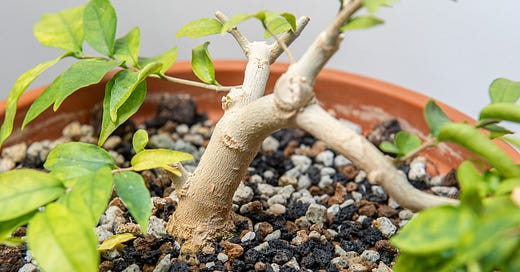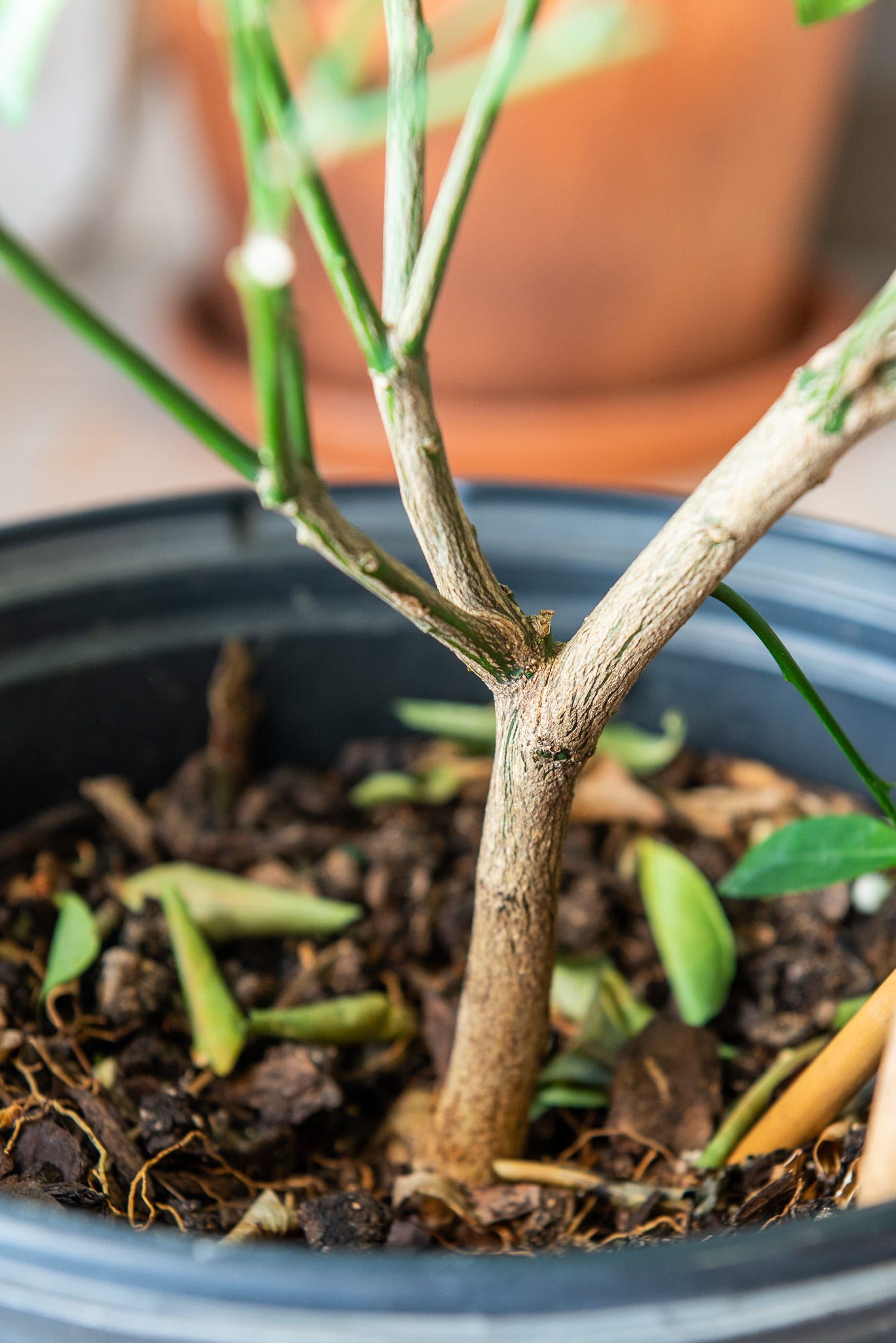Bury your nebari
Roots need time to grow beneath the soil, and even more before they're ready for public view.
I’ve been trawling Facebook Marketplace for trees and found some good deals. Ficus benghalensis (aka Ficus Audrey) and citrus trees show up often as houseplants, and this week I noticed listings of each that would make good bonsai. I’m talking seven-foot-tall trees with thick, established trunks, priced at a fraction of what I’d pay at a garden center. I have a new calamansi and a benghalensis that I’m planning to grow out for a while before chopping their trunks. These Facebook trees would shave years off that timeline.
I think I’m going to pass on them. As nice as the trunks are, my plant room is at full capacity. I just don’t have the space for more trees, and don’t like the idea of kicking out two perfectly good ones to make way for newer, flashier versions.
Instead I’ll need to practice patience. Wait for my trees to grow up, nudging them in the right direction now and then. There’s no instant gratification in bonsai.
One of the first things you learn about tree planting—for full size trees, I mean—is the importance of exposing a tree’s root flare above the soil. Bury the roots too deep and they can’t access oxygen. The bark beneath the surface may rot, or form adventitious roots that could girdle the tree trunk.
In bonsai, ironically, burying a tree’s root flare may be essential to its survival. This is particularly the case with recently transplanted trees or ones that have undergone severe root work. Bonsai substrate allows more airflow than regular soil, and a tree with its nebari fully exposed may lose its surface roots to dehydration before they can establish themselves. The roots require cool, damp soil to grow and harden off. So you bury them and wait months or years until the nebari is better developed.
This can be frustrating for impatient growers like myself. A wide root flare contributes to a bonsai’s sense of age and proportion. A trunk with a buried nebari looks like a stick in a pot; expose the nebari and it may start to look like a tree. I want it to look like a tree now.
I recently worked the roots of my water jasmines to improve their root flares. I excavated the roots, selected a few that anchored the trees nicely, and pruned the rest. Then I buried the trees deeper than before to let them sprout new roots from the pruning wounds.
Sometimes you have to hide part of yourself from the world in order to grow. A nebari is built slowly over time. Show it off before it’s ready and the new roots you’ve worked so hard to gain can shrivel up dead. So I’m keeping them buried, just for a little while, until they’re strong enough to stand up on their own.
My new calamansi and ficus will take longer. Since I’m starting both while they’re young, I’ll be able to guide their trunks into more interesting shapes than the straight-as-a-pillar Facebook trees. It’s tempting to start over with bigger, more established trunks, but I think mine will be worth the wait.
Tree reading
It’s olive harvest season in Gaza, but farmers like Samaher Abu Jameh have been chased off their land by two months of relentless Israeli bombings, with no clue whether they’ll ever be able to return. “I have no idea what state they are in. I just want to reach my land to see what has become of it.” [Al Jazeera]
Meanwhile in Lebanon, farm workers are risking their lives to pick olives while dodging Israeli bullets, due to a season of border skirmishes between the IDF and Hezbollah. [Olive Oil Times]









I often find wisdom in your tree thoughts, but "Sometimes you have to hide part of yourself from the world in order to grow" seems to have arrived at just the moment when I needed to hear it. Thank you!
I use moss, which helps keep humidity and moisture. It is the number one way to continue the root growth. Many beginners open the roots up too soon.